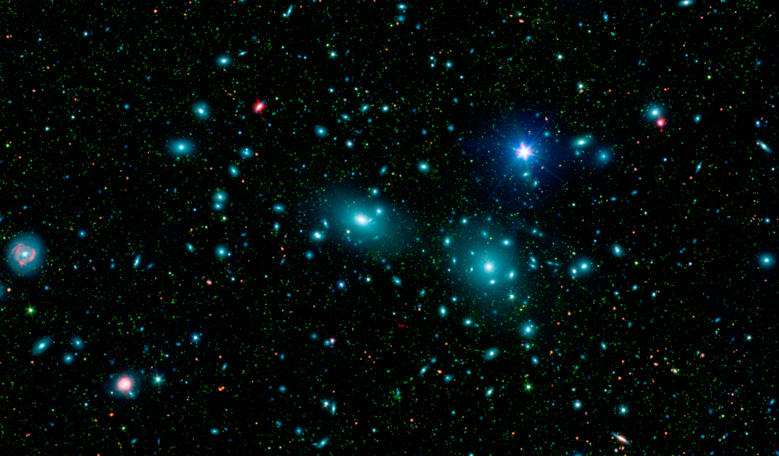The ingredients that make up dark matter, the elusive substance which makes up around 80 percent of the Universe, has eluded scientists for decades, but now a newly identified sub-atomic particle could change all of that.
Dark matter’s existence has a long history. It was first inferred by Fritz Zwicky back in 1933, when the astronomer calculated that the Coma cluster of galaxies lacked a substantial amount of mass in all of its stars to keep the galaxies from flying away from one another.
As the stars only accounted for about 1 percent of the mass, something unseen seemed to be providing the gravitational glue that kept them together. But what?
Back then is was referred to as the “missing mass,” problem and despite a number of theories over the years postulating what this mysterious stuff could be, such as WIMPs, Weakly Interacting Massive Particles, or MACHOs, MAssive Compact Halo Objects, scientists are no closer to providing a definitive answer on its origins.
However, nuclear physicists at the University of York, UK, think their recent discovery might yield the answer; a d-star hexaquark.
This new candidate is a particle made up of six quarks - the building blocks of other known particles such as protons and neutrons. When these quarks combine though they result in a boson particle.
Elementary bosons are force carriers that function as the 'glue' holding matter together. So this means that when many d-stars are present they can combine together in very different ways to the protons and neutrons.
The researchers, whose lead author on the recent paper submitted to the Journal of Physics G Letter is Professor Daniel Watts, suggest that shortly after the Big Bang, conditions could have allowed for many d-star hexaquarks to group together to form a Bose-Einstein condensate.
This state of matter, also called the fifth state of matter, typically forms when a gas of bosons at low densities is cooled to temperatures very close to absolute zero.
"The origin of dark matter in the universe is one of the biggest questions in science and one that, until now, has drawn a blank,” says Watts while discussing the first assessment of the viability of this new dark matter candidate.
“Our first calculations indicate that condensates of d-stars are a feasible new candidate for dark matter. This new result is particularly exciting since it doesn't require any concepts that are new to physics,” he said.
The group at York say the next step in establishing whether d-star hexaquarks are a viable contender to explain dark matter or not is to test their theory with scientists in Germany and the US before searching for the hexaquarks in the cosmos.











